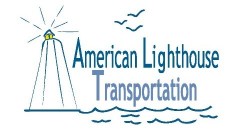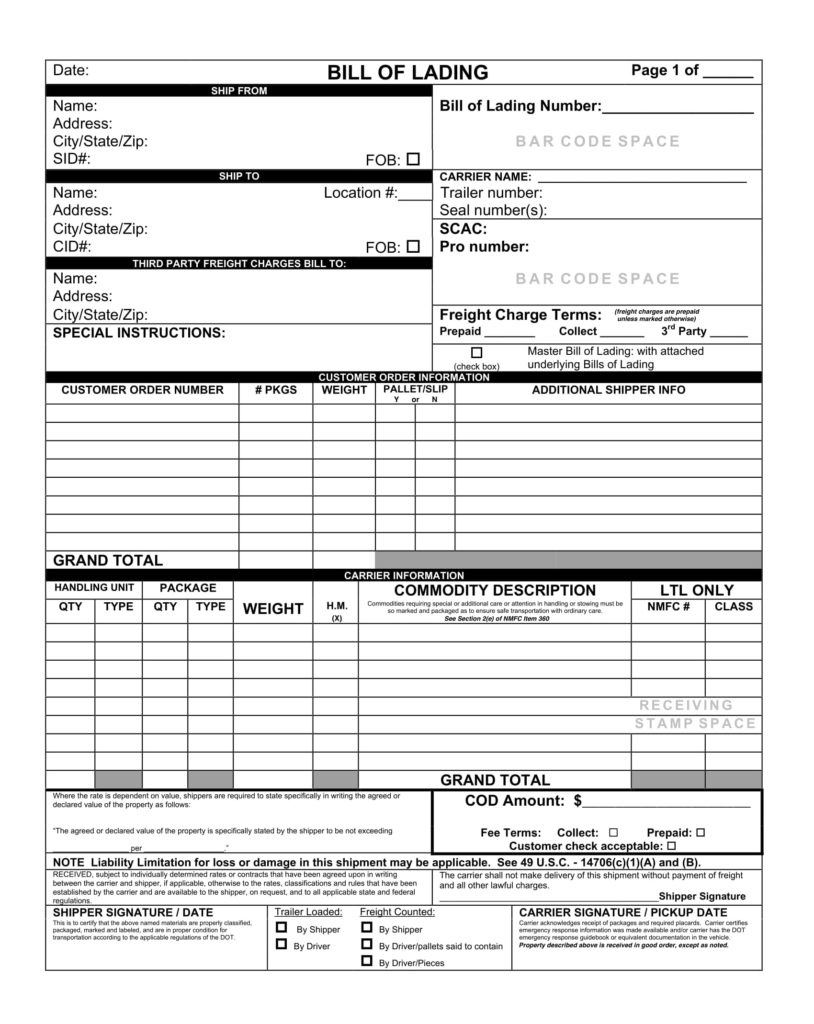 The bill of lading (BOL) works as a receipt of freight services, a contract between a freight carrier and shipper and a document of title. The bill of lading is a legally binding document providing the driver and the carrier all the details needed to process the freight shipment and invoice it correctly. In the world of freight, you must have every entail of your shipment laid out. Every last specification should be clear to all involved in order for your process to run smoothly. In this article, we will review what exactly a bill of lading is, who/how they are created, and some important exceptions to keep in mind. The following should be on all bills of lading…
The bill of lading (BOL) works as a receipt of freight services, a contract between a freight carrier and shipper and a document of title. The bill of lading is a legally binding document providing the driver and the carrier all the details needed to process the freight shipment and invoice it correctly. In the world of freight, you must have every entail of your shipment laid out. Every last specification should be clear to all involved in order for your process to run smoothly. In this article, we will review what exactly a bill of lading is, who/how they are created, and some important exceptions to keep in mind. The following should be on all bills of lading…
Addresses
There are a few things that must be on the BOL. First, the delivery address. The accuracy of your shipment’s address is of great importance. If you do not have the correct address listed, your rates and transit time could be impacted. Include the shippers and receiver’s full name and address.
Packaging Type
The BOL should also include a brief description of the packaging type in shipment- whether it is crates, pallets cartons or drums. To avoid freight damage it is important that you properly prepare your shipment. Be sure it is properly labeled with the packaging type. If not, there may be additional charges.
National Motor Freight Classification (NMFC) Freight Class
In the United States, each commodity or type of product is assigned a National Motor Freight Classification (NMFC) and corresponding class for less than truckload (LTL) freight shipments. The (NMFC) system is a standardized method designed to give consumers a uniform pricing structure when transporting freight. Freight classes may influence the cost of your shipment. The 18 freight classes are based on weight, dimensions, density, storage, capability, ease of handling, value and liability. Make sure you understand each one of them so you are able to include the most appropriate one.
Description of Goods
Material of manufacture, common name, and the exact weight of the shipment should be included. Give a thorough description of the shipment details. This will help everyone who comes in contact with the freight
Collect Shipments
Another important section of the BOL is Section 7 which refers specifically to collect shipments. It is important to remember up front, that a shipment is automatically assumed pre-paid unless marked as collect. When the BOL for a shipment is marked as collect, and Section 7 is signed by the shipper that signifies that if the consignee does not pay the freight charges, the carrier cannot go back to the shipper for payment. Therefore, the carrier can hold the freight until payment from the consignee is received.
Special instructions
If you are shipping anything that requires special care such as hazardous materials, you must include specific directions of how to handle these goods during transit.. There are accessorial fees attached to specialized services if the freight is not properly labeled.
Take Time on the BOL and You Will Save Yourself Time and Money
The two factors saving time and and money for small businesses are most important. So in the long run take the extra preparation time in the beginning of the shipping process when it comes to the BOL. Because there are lots of things to weigh out when it come to the BOL.
Contact Us (859) 824-4177 for more information or to get a quote!
—
 About American Lighthouse Transportation
About American Lighthouse Transportation
American Lighthouse Transportation has been serving shippers with honesty and integrity throughout the United States, since 1998. You can depend on our experienced and knowledgeable management team, drivers, and support for all your shipping needs. We communicate effectively to make sure your shipment arrives safely, accurately, and on-time! You can count on us for personalized customer service, expert guidance, accurate anticipation of potential setbacks, and possible workarounds and solutions.
>> Learn More

